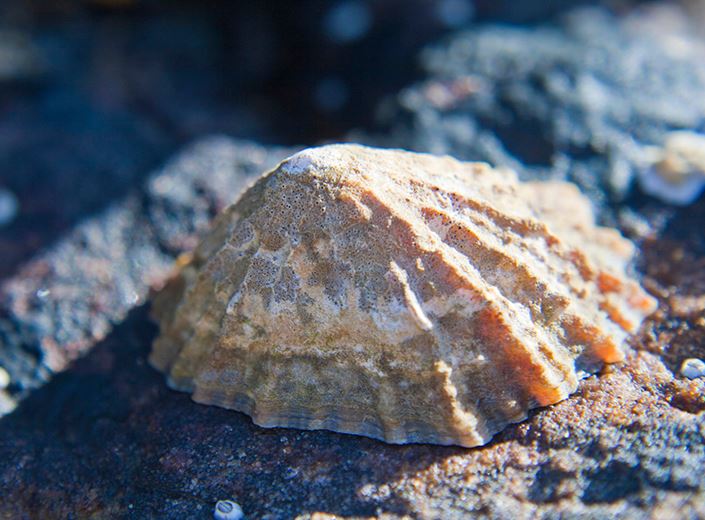Limpet teeth are probably the strongest natural material on Earth, and not spider silk, researchers from the University of Portsmouth reported in the Royal Society’s journal Interface.
Limpets are small aquatic snail-like animals with conical shells. While some limpet species live in fresh water, the vast majority are marine (seawater creatures).
The researchers found that limpets have teeth with biological structures that are so strong they could be copied to make aircraft, boats and cars of the future.

A scanning electron microscope image of limpet teeth. (Image: University of Portsmouth)
The scientists examined the mechanical behavior of limpet’s tiny teeth by using atomic force microscopy, which is more than 1,000 times better than optical diffraction. Atomic force microscopy pulls apart materials all the way down to atomic levels.
Study leader, Asa Barber, a Professor at the University of Portsmouth’s School of Engineering, said:
“Nature is a wonderful source of inspiration for structures that have excellent mechanical properties. All the things we observe around us, such as trees, the shells of sea creatures and the limpet teeth studied in this work, have evolved to be effective at what they do.”
“Until now we thought that spider silk was the strongest biological material because of its super-strength and potential applications in everything from bullet-proof vests to computer electronics but now we have discovered that limpet teeth exhibit a strength that is potentially higher.”
The research team found that limpet’s teeth contain goethite, a dark or yellowish-brown mineral consisting of hydrated iron oxide. Goethite is the main component of rust and bog iron ore. The mineral forms in the limpet as it grows.
Prof. Barber said:
“Limpets need high strength teeth to rasp over rock surfaces and remove algae for feeding when the tide is in. We discovered that the fibres of goethite are just the right size to make up a resilient composite structure.”

Close-up of a Limpet. Unlike barnacles and mussels, limpets can move about. (Image: University of Portsmouth)
The authors believe that the fibrous structures found in limpet’s teeth could probably be mimicked and used in the manufacturing of the hulls of boats and airplanes, as well as the high-performance engineering applications of Formula 1 racing cars.
“Engineers are always interested in making these structures stronger to improve their performance or lighter so they use less material,” Prof. Barber explained.
Strength not affected by size
The scientists also found that limpet teeth, no matter what the size, have the same strength. Most larger structures tend to have more flaws and can break more easily compared to smaller ones. This is not the case with limpet teeth.
Prof. Barber and colleagues tested super-thin samples of the material – nearly 100 times thinner than the diameter of a human hair. The techniques used to break such samples have only just been developed.
Prof. Barber said:
“The testing methods were important as we needed to break the limpet tooth. The whole tooth is slightly less than a millimetre long but is curved, so the strength is dependent on both the shape of the tooth and the material. We wanted to understand the material strength only so we had to cut out a smaller volume of material out of the curved tooth structure.”
The study of effective designs in nature and then creating structures based on these designs is called “bioinspiration”.
Professor Barber said:
“Biology is a great source of inspiration when designing new structures but with so many biological structures to consider, it can take time to discover which may be useful.”
